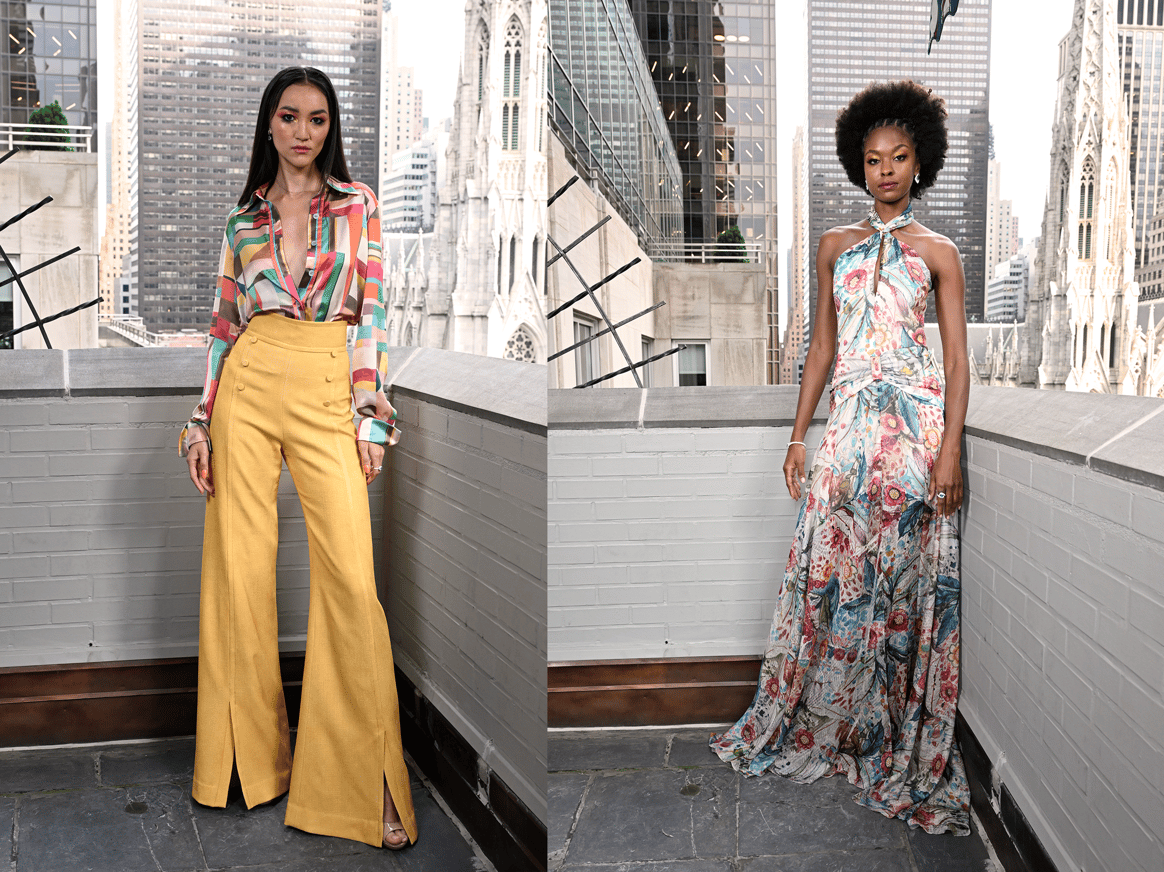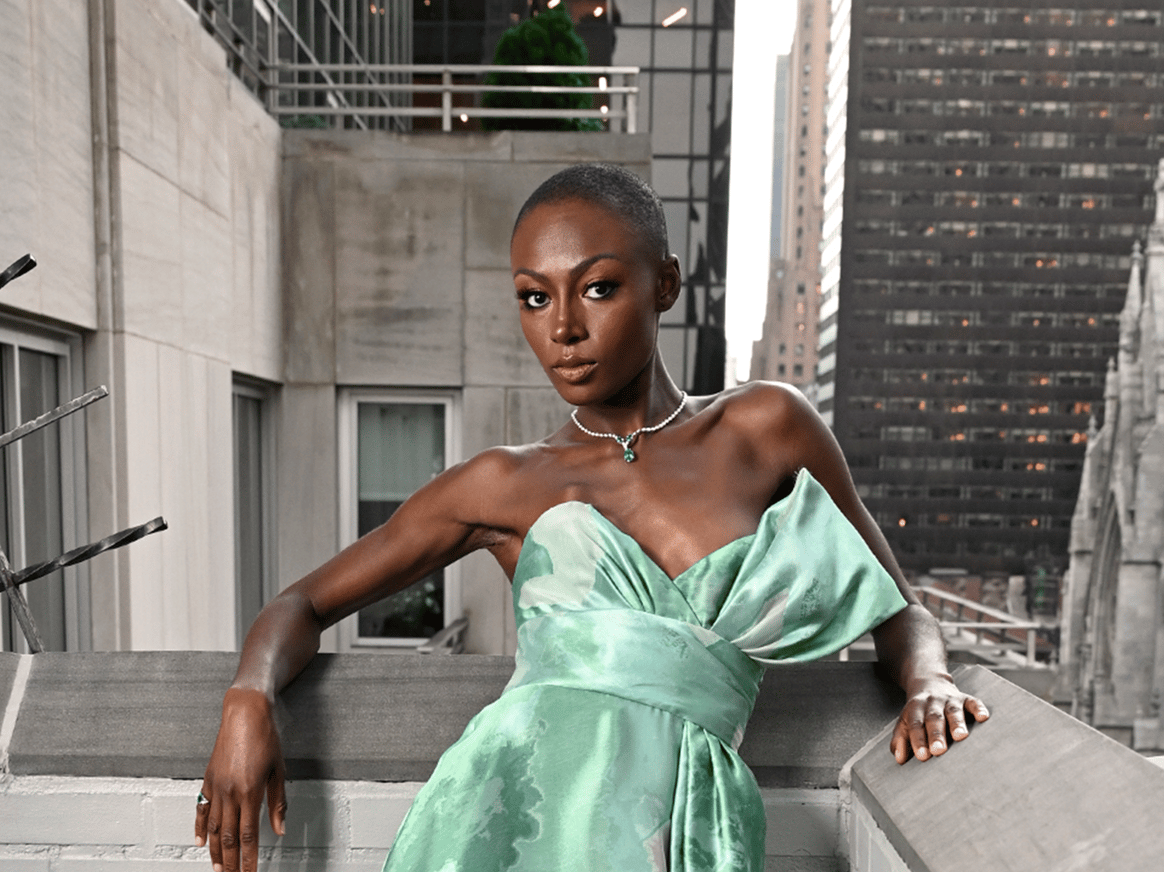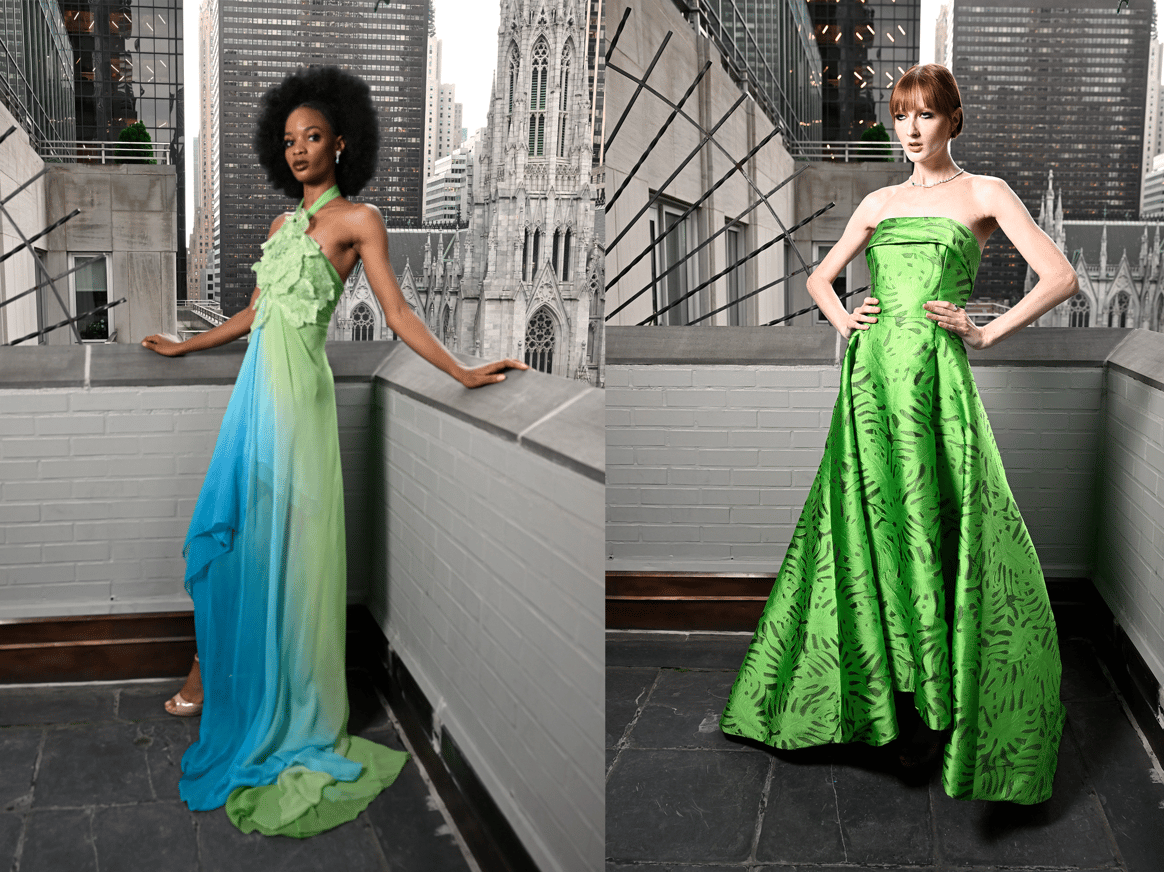Engaged in the clothing industry for 20 years.

Kevan Hall, Chatham and Pandora bring glitz of lab grown diamonds to NYFW
Entitled “Cote d’Azur,” inspired by a recent visit to see his brother who lives in Saint Tropez, Hall’s ss24 collection evoked a dreamy 1930s road trip in an early convertible from north west France’s Deauville resort, where figures like Claude Monet to Coco Chanel spent les vacances, to the infamous ocean front jet-set hub of the south coast, culminating in a trip to the Cannes Film Festival. The collection spoke to both a relaxed summering aesthetic and the high gloss glamor of the glitterati.

Detroit-born Hall launched his eponymous collection in 2001 after a tenure of creative directorship at the legendary house of Halston also synonymous with a spirt of ease and glamor. Hall’s dresses are habitually worn by actresses and celebrities but Cannes is the one red carpet the designer says he has yet to conquer.
While Hall has featured jewelry in previous collections, this was his first true creative collaboration. “I gave Monica my inspiration and we chatted and they designed a piece for every look,” Hall told FashionUnited backstage after the show. “This is the first time I’ve had someone design the jewelry to go with the collection and we did it all so seamlessly. Lab-grown is the future.”
The Monica in question is Monica McDaniel from Chatham, the original architects of lab-grown gemstones whose innovations, just like Hall’s inspiration, can also be traced back to the 1930s.

“We started in 1936 with emeralds, and since then we’ve grown many exotic gemstones, ruby, alexandrite, padparadscha,” McDaniel told FashionUnited “Two years ago we introduced two new colors so we’re still growing and we have about 13 gemstone varieties grown in a laboratory. The idea is to create unique shapes and the ability to do that is greater with lab-grown over mined.”
McDaniel cites high clarity, richly saturated color, and stones grown without treatments, filling, or oil as benefits. She says, “Sometimes the price difference from lab-grown to mined can be hundreds of thousands of dollars. If you were to find like quality to ours in its mined counterpart, it would typically be in a museum or at auction because that would be very rare specially in the sizes we offer.”
It was a unique collaboration but Hall is known as a colorist, with his show notes listing shades of berry, peridot, tangerine, rose and coral, and his fabrics and silhouettes are designed to turn heads. “He showed us his fabrics and we designed an upper end collection from his vision, so this is all 18 carat straight from his palette, crystal baron, aqua de spinal, blue sapphire, emerald, reminiscent of the Mediterranean to reflect his design sensibility.”

NYFW ss24 seen through a lab-grown diamond-tinted lens
Five days earlier NYFW kicked off with a high-profile celebrity-filled launch party for Pandora’s range of lab-grown diamonds with attendees including Julia Fox, Grace Coddington, Halle Bailey, Precious Lee and Pandora brand ambassador, Pamela Anderson. The brand vowed to “take over New York Fashion Week through diamond-tinted lenses” and representatives describing their lab-grown stones, like McDaniel, said there is minimal aesthetic difference in lab-grown and mined and that even a trained gemologist cannot tell the difference, only highly sophisticated machinery can detect it.

Whether lab-grown will eat into the market share for mined is not a matter that preoccupies McDaniel: “For Chatham it’s never been about one versus the other. We are not here to replace any category, we are an additional category, and believe there should be co-existence in the marketplace for both mined and lab-grown and it’s key to educate the consumer about the advantages of each so that they will make their informed decision.”
While lab-grown stones made a glamorous impression this fashion week, their carbon footprint is a small fraction of that of natural gemstone mining which will surely continue to pique interest as brands and consumers seek more sustainable products.